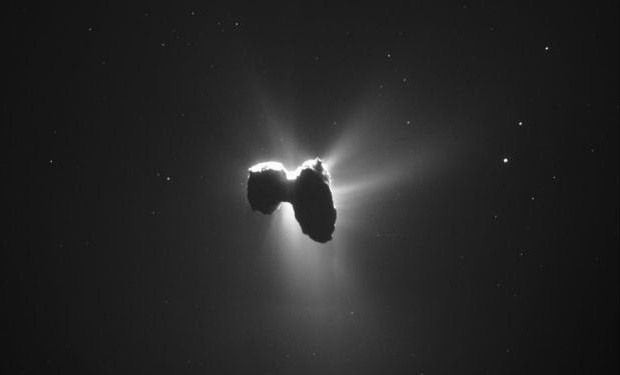The space probe known as Rosetta has spent 12 years traveling billions of miles in the solar system, mostly between Earth and Mars. Rosetta and its piggy-backed companion Philae were sent by the European Space Agency (ESA) to explore a comet known as 67P. When Philae was sent down from Rosetta several years ago, it became the first spacecraft to land on a comet; but unfortunately, it had a rough landing and was lost except for a few brief communications. Nevertheless, it did reveal that Comet 67P was covered with 16 types of organic (carbon-containing) compounds that are now being studied for clues to the origin of life on earth. It also found water and carbon dioxide both necessary for life as we know it. This bolsters the theory that the building blocks of life may have arrived on earth by comets carrying such molecules.
[Rosetta, Traveling 12 Miles Per Second, Snaps Amazing Photo of Comet 67P]
Now that the mother ship Rosetta has ended its usefulness, the ESA has decided to crash it into the comet with the expectation of getting more of the data that Philae could not provide, thereby silencing it forever as well. During its descent, Rosetta will take high resolution pictures and analyze the gas jets that erupt from the miles-long comet. This $1.5 billion science project is taking place 300 million miles from us, but what information it is providing! The crash is scheduled for around 1:20pm ET, September 30.
